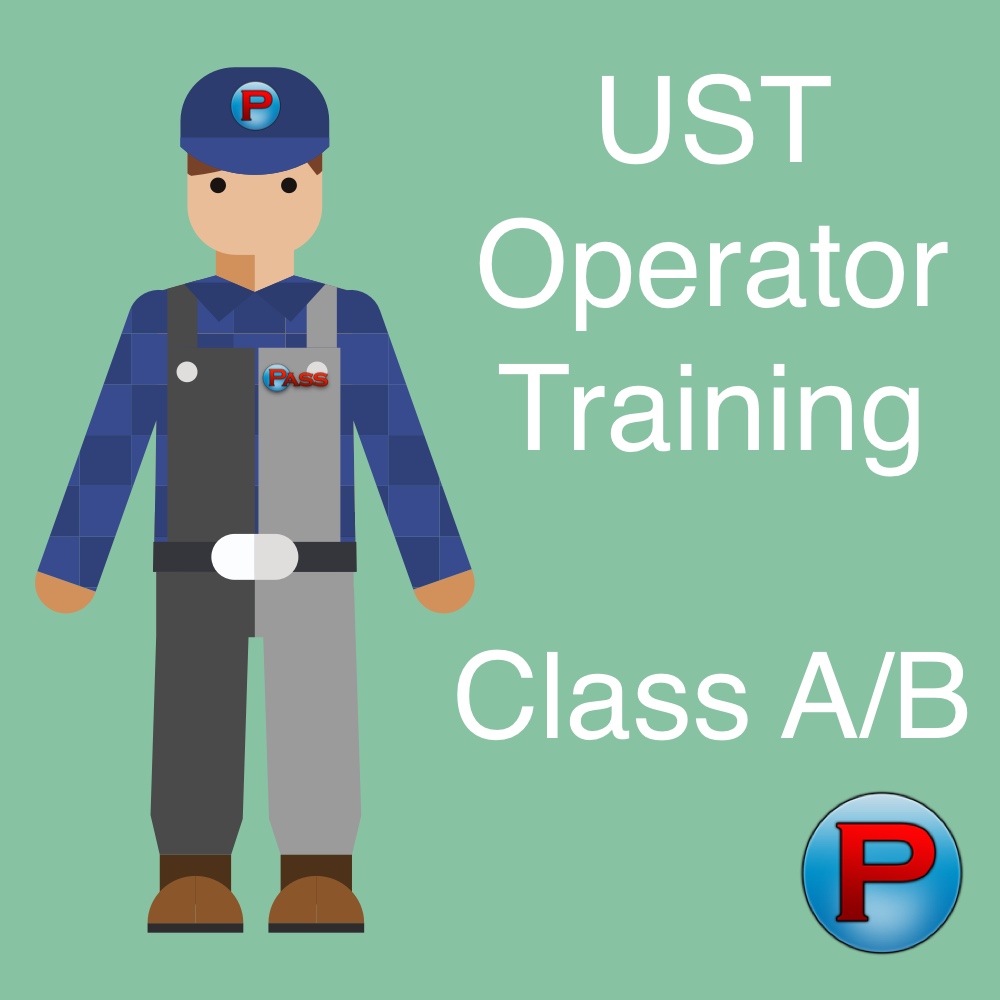The PASS Training Marketplace
Nebraska UST Class A/B Operator Training
Nebraska UST Class A/B Operator Training
Product Description
Nebraska A/B operator training:
In Nebraska, UST (Underground Storage Tank) A/B operator training is essential for ensuring the proper management and maintenance of UST systems.
The training is state-approved and available online, allowing operators to complete it at their own pace.
Class A operators are responsible for the overall operation and regulatory compliance of the UST systems, while Class B operators focus on the day-to-day operational tasks.
The training covers a wide range of topics, including leak detection, spill prevention, and emergency response, ensuring that operators are well-prepared to handle any issues that may arise.
Additionally, operators must be retrained every five years to stay current with the latest regulations and best practices.
In Nebraska, UST (Underground Storage Tank) A/B operator training is essential for ensuring the proper management and maintenance of UST systems.
The training is state-approved and available online, allowing operators to complete it at their own pace.
Class A operators are responsible for the overall operation and regulatory compliance of the UST systems, while Class B operators focus on the day-to-day operational tasks.
The training covers a wide range of topics, including leak detection, spill prevention, and emergency response, ensuring that operators are well-prepared to handle any issues that may arise.
Additionally, operators must be retrained every five years to stay current with the latest regulations and best practices.
All of PASS’ UST operator training courses meet and exceed the federal requirements for UST operator training and are offered through our in-house designed and built Learning Management System (LMS). PASS’ state-specific A/B training courses are custom-tailored to meet state requirements and are accepted by more states than any other training provider. Our courses are available on-demand, 24/7 and are accessible from any internet-connected computer, tablet, or phone. The student can complete an entire course in a single session or take the course in segments. The training may be stopped and restarted, allowing for maximum schedule flexibility. PASS also does not impose time restrictions on course access, so students may take as much time as they need to complete their training.
PASS’ UST training course content is divided into chapters. Each chapter utilizes a combination of text, images, and narration, providing a multi-faceted learning experience for diverse learning styles. Each chapter is followed by a quiz. If the student answers a quiz question incorrectly, the application automatically redirects the student to the correct course information. The student is then given another opportunity to answer the quiz question. This reflexive quizzing model ensures comprehension of the course material and reinforces learner retention.
In addition to the quizzes, the UST Class A/B operator training course includes a final exam, 80% of which must be answered correctly in order to print a certificate. The trainee can complete the entire course in a single session (approximately 4 hours plus exam time) or take the course in segments.
- Validity
- 5 years
- Final Exam
- Yes
- Final Exam Passing Score
- 80%
- Certificate
- Yes
- Average Rating
- / 17 Reviews
- Regulated By
- Nebraska State Fire Marshal - Fuels Division →
Operator Overview Chapter 1
This first chapter discusses one of the most critical components of any facility: the personnel. Both the EPA and the states have regulations for operator duties and training. This chapter explains the different roles. Facilities are difficult to manage and maintain, and we learn that it's not just as simple as distributing a product, selling sodas and collecting money.
System and Components Chapter 2
It is extremely important for station personnel to know the components of a station, and how it operates, so this chapter gives a thumbnail description of the mechanics of a facility. Throughout the training, there are documents for download to help station operators perform their duties.
Release Detection Chapter 3
While every facility is different, they all have release detection, or monitoring, equipment in common. This chapter looks at the various monitoring devices, and what role an operator plays. Monitoring is important to catch leaks before they become a major headache. No operator wants to be responsible for ignoring monitoring issues resulting in a release into the environment
Release Prevention Chapter 4
In their collective wisdom, the states and the EPA mandate certain components to avoid a major spill or leak. Station operators should follow the two M’s: maintenance and monitoring. Doing both can avoid or lessen the impact of costly repairs or remediation. This chapter will help operators do just that.
Administration and Record Keeping Chapter 5
Owning and operating a UST Facility is not just about equipment and preventing releases. This chapter really dives into the other facets of UST management: registration, installation, ownership, financial requirements, paperwork, fuel delivery, reporting and closure.
Inspections and Response Chapter 6
The final chapter in our training is designed to ensure that the A/B Operator is prepared for upcoming inspections, both regulatory and in-house. We also cover the different functionality tests and how to handle these. Finally, we will discuss the appropriate response to fires, releases and other emergencies.


